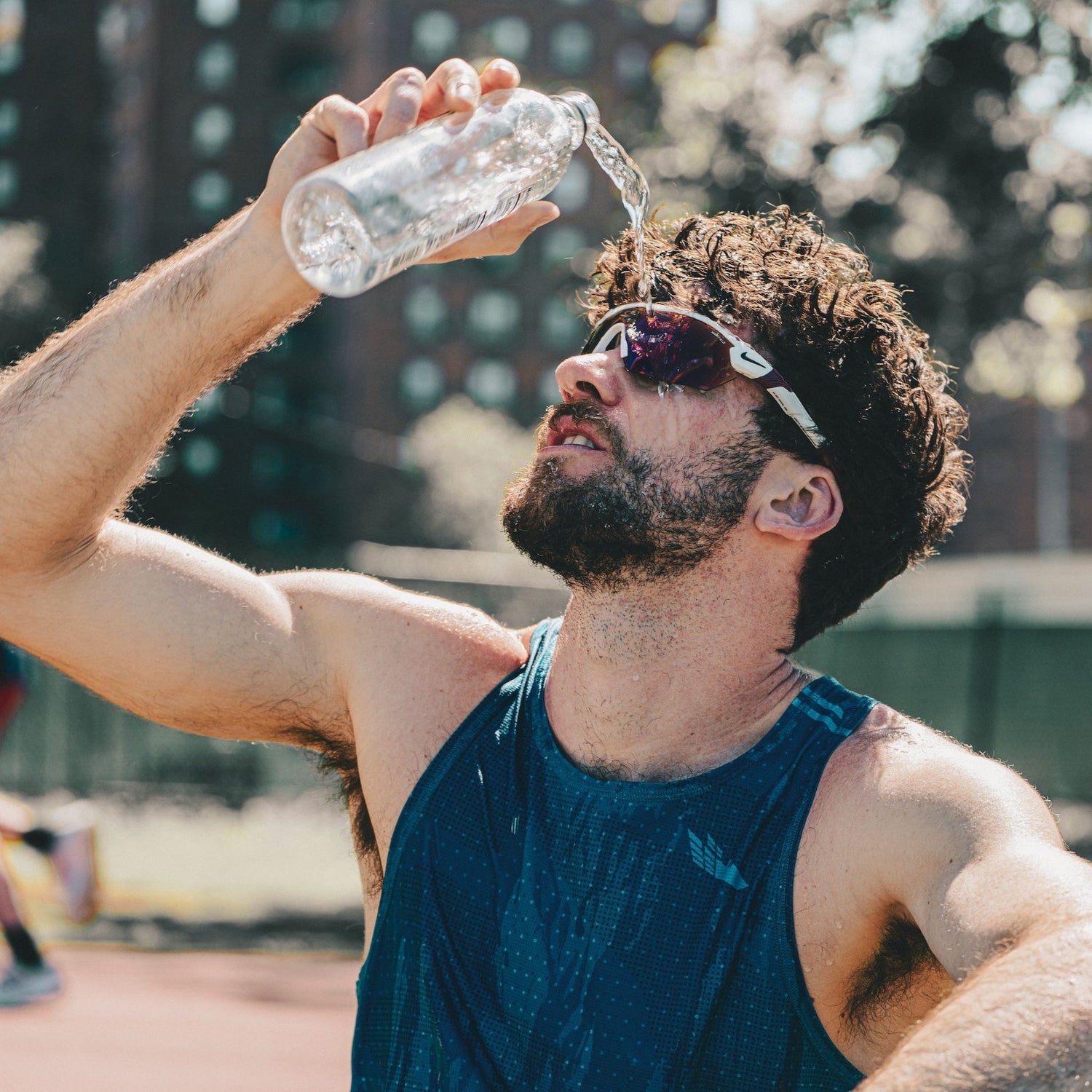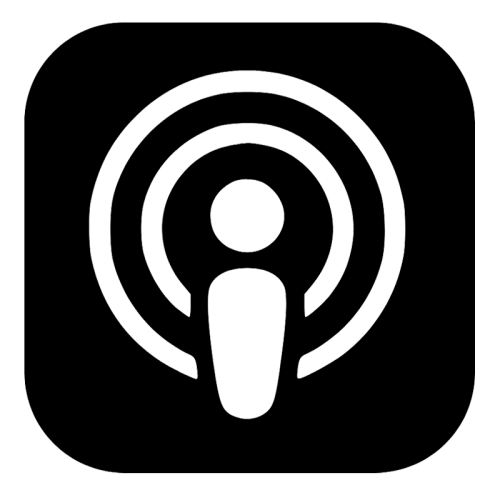A practical guide to heat training for endurance runners —why it works, the science behind it, and how to apply protocols to boost performance year-round.
Most non-elite endurance athletes are leaving performance gains on the table. Heat training—often dismissed as something you only do before a hot race—is one of the most misunderstood and underutilized tools in the sport. Done right, it can boost cardiovascular capacity, improve recovery, and prepare you to train harder for longer—no matter the conditions on race day.
In this episode of Legwork, Matt and Molly explore the overlooked benefits and surprising versatility of heat training. Through stories from their own racing and coaching, they show how it can be more than a summer survival skill—it’s a year-round performance weapon hiding in plain sight.
Episode Description
This episode is your practical, research-backed guide to heat training—covering nearly everything an endurance athlete needs to know to apply it effectively and safely.
Matt and Molly break down the most up-to-date science on how heat affects performance, the physiological adaptations you’re aiming for, and the three proven methods to achieve them:
- Training in hot environments to closely mimic race conditions
- Layering to simulate heat when the weather won’t cooperate
- Passive post-workout heat exposure like saunas or hot-water immersion
They explain how to choose the right method for your situation—or make the most of the method you have available—and how to time it so benefits carry through to your race. You’ll also learn how long adaptations last, how to maintain them, and what to watch for in hydration, fueling, and recovery to avoid setbacks. Whether your target race is hot, cool, or somewhere in between, this episode gives you the tools to use heat training with precision—and see results when it matters most.
00:00 – Introduction to Heat Training and Personal Experiences Driving Our Understanding
Matt opens with the story of a grueling Leadville Marathon—high altitude, summer heat, and challenging climbs—which left him destroyed at the finish. That experience sparked a deep research dive into performance in extreme conditions. Initially focused on altitude, the exploration led to the science of heat training. Molly emphasizes that their advice is grounded in a thorough review of scientific literature and hands-on coaching application, not guesswork.
05:49 – The Primary Studies We Reviewed In Preparation For Our Heat Training Episode
Molly describes selecting studies that focus on well-trained or elite athletes, as results from untrained individuals can be misleading (since almost any training stimulus produces big gains in beginners). Three key review-level studies are highlighted:
- Casadio, Julia & Kilding, Andrew & Cotter, James & Laursen, Paul. (2017). From Lab to Real World: Heat Acclimation Considerations for Elite Athletes. Sports Medicine. 47. 10.1007/s40279-016-0668-9.
- Heathcote SL, Hassmén P, Zhou S, Stevens CJ. Passive Heating: Reviewing Practical Heat Acclimation Strategies for Endurance Athletes. Front Physiol. 2018 Dec 20;9:1851. doi: 10.3389/fphys.2018.01851. PMID: 30618849; PMCID: PMC6306444.
-
Kissling LS, Akerman AP, Cotter JD. Heat-induced hypervolemia: Does the mode of acclimation matter and what are the implications for performance at Tokyo 2020? Temperature (Austin). 2019 Sep 3;7(2):129-148. doi: 10.1080/23328940.2019.1653736. PMID: 33015241; PMCID: PMC7518763.
08:05 – Major Reasons Why You Should Care About Heat Training
Heat can cut performance by 6.5–10%, a huge margin compared to typical “marginal gains.” Benefits aren’t limited to hot races—heat adaptation can improve general fitness, make summer training more manageable, and may even provide crossover benefits to altitude performance. Four core reasons to consider heat training:
- Preparing for hot race conditions.
- Enabling higher-quality training during hot periods.
- Gaining performance benefits even for cool-weather events.
- Cross over into altitude training effects.
12:42 – Why Running In The Heat Is Challenging
Molly explains that 75–80% of exercise energy becomes heat, and humans aren’t especially efficient at dissipating it. The body uses two main strategies, both of which are impaired in hot and humid environments:
- Shunting blood to the skin to radiate heat (reducing oxygen available to muscles).
-
Sweating and evaporative cooling, which is less effective in humid conditions.
These changes reduce VO₂ max, raise heart rate, and increase reliance on glycogen rather than fat stores. Fast-twitch athletes may experience more heat-related performance drop-offs. - Increased Heart Rate occurs due to a decease in blood plasma volume, which also raises the rate of perceived exertion.
20:21 – Anecdotal Experience with Heat Training In Recent Ultra Performances
Matt describes using two protocols—running in heat and sauna sessions—for events like Vermont 100 and Boston Marathon. Over repeated use, he’s observed quicker sweat onset and higher sweat volume at the same temperature—key adaptation markers. He also notes possible performance benefits on hot race days compared to peers.
23:28 – The Three Heat Training Methods We Cover and General Physiological Benefits of Heat Training
Overview of the three main methods:
- Training in a hot environment.
- Adding layers to amplify heat load.
- Passive heat exposure after workouts (sauna, hot-water immersion).
Core adaptations across all in varying degrees: increased plasma volume, aiding cooling and oxygen delivery; earlier sweat onset; reduced sweat sodium concentration; and lower resting core temperature.
28:32 – Thermal Regulation and Adaptations
Molly details specific changes:
- Sweating begins sooner.
- Sweat rate increases (though sweat becomes more dilute).
- Resting core temperature drops slightly.
These changes apply in everyday life—heat-adapted athletes may notice they sweat earlier even outside training.
31:12 – Protocol by Protocol Analysis
Sets up the deep dive into each method, focusing on how to execute them, pros and cons, and how to measure success. Safety is emphasized throughout.
32:53 – Protocol 1: Training In A Hot Environment
This is the gold-standard method when your goal is to perform in hot conditions—and one of the most studied and proven approaches to heat adaptation.
How it Works
You deliberately schedule training sessions in an environment that is hot enough to trigger the body’s heat adaptation mechanisms—typically 86–104°F (30–40°C). Exposure must be sustained long enough (around 60 minutes) to elevate and maintain core temperature for adaptation to occur. This can be achieved through:
- Outdoor sessions during the hottest part of the day
- Indoor “heat chamber” setups (often available to elite athletes)
- DIY versions such as a garage with heaters, though safety and ventilation are critical
Exposure Requirements
- Frequency: Ideally daily sessions for 10–14 consecutive days for maximal plasma volume expansion and thermoregulation benefits.
- Alternative schedule: Some studies found similar adaptations with ~14 total exposures over ~3 weeks (not consecutive), but benefits take longer to accumulate.
- Session Length: About 60 minutes per exposure—can be continuous or broken into longer warm-up plus main training.
- Temperature: Most studies use 86–104°F; drier heat appears more effective for sweat rate adaptations than hot-humid conditions.
Adaptations You’re Targeting
- Plasma Volume Expansion: More circulating fluid allows better cooling and sustained muscle oxygen delivery.
- Earlier Sweat Onset: The body begins cooling itself sooner in a session.
- Higher Sweat Rate: Increases cooling capacity in competition.
- Lower Resting and Active Core Temperature: Reduces heat strain during racing.
- Lower Resting and Exercise Heart Rate: Makes paces feel easier in the heat.
Pros
- Directly simulates race conditions—best transfer to hot-weather performance.
- Allows fueling/hydration practice under race-like conditions.
- Can produce large performance gains relative to baseline.
Cons / Caveats
- Weather dependence: Not possible in cooler climates without indoor solutions.
- Training impact: Heat is itself a stressor; trying to do high-intensity workouts during this block can lead to overtraining or poor recovery.
- Hydration demands: Sweat rate will increase as adaptation occurs—may require more fluids than before.
- Safety risks: Heat exhaustion or heat stroke if poorly managed.
Scheduling in a Training Cycle
Treat this like a dedicated mesocycle within your plan—2 weeks focused on heat adaptation. Avoid layering additional high-stress workouts; most sessions should be easy to moderate effort so that heat, not intensity, is the main training stimulus.
- Example: Swap speed/interval sessions for easy aerobic runs during this period.
- Placement: Can be implemented mid-cycle to build resilience, or during taper to sharpen hot-weather readiness.
Environmental Variables
- Dry vs. Humid Heat: Dry heat allows more effective sweat evaporation, which may help signal the body to increase sweat rate.
- Time of Day: Midday/afternoon heat is usually hotter and drier than early morning—ideal for adaptation, though hydration/safety precautions are crucial.
Special Considerations
- Some athletes in cool climates have improvised indoor heated environments with space heaters + treadmill/bike, but this must be done with extreme caution to prevent dehydration or overheating.
- In studies, longer-term protocols (5–6 weeks) have shown small increases in hemoglobin/red blood cell mass, which may provide altitude-like benefits—though most benefits come from plasma volume changes that happen within 10–14 days.
46:06 – Protocol 2: Adding Layers to Augment Heat of The Natural Environment
When the weather won’t cooperate—cooler seasons, early training blocks, or living in a temperate climate—layering clothing is a way to artificially increase heat stress without relocating to a hot environment. This method traps heat and moisture around the body, aiming to mimic the core temperature rise you’d get in a hot race or summer training session.
How it Works
You wear extra or non-breathable clothing during training to raise core temperature and sustain it at adaptation-triggering levels. This could be:
- Multiple base and mid-layers over your normal running gear
- Sauna suits made of impermeable materials
- Heavy, non-wicking fabrics (cotton, wool) to trap heat and reduce evaporation
The goal is to create an internal “microclimate” hot enough to stress the thermoregulatory system—ideally reaching a similar physiological load to 86–104°F outdoor training.
Exposure Requirements
- Frequency: Similar to hot-environment training—10–14 total exposures (ideally consecutive) for maximal effect.
- Session Length: ~60 minutes per exposure.
- Clothing Selection: Enough to reach target internal heat load without causing unsafe overheating. Breathable, wicking fabrics reduce the effect—non-breathable materials trap more heat.
- Environmental Baseline: Works best in mild (60–75°F) conditions. Too cold and you won’t achieve enough stress; too warm and safety risks rise quickly.
What the Science Shows
- Ineffective Example: A 2018 triathlete study had participants add a light long-sleeve, full tights, gloves, and a thin wicking jacket in 50°F conditions. No meaningful adaptations occurred—core temperature likely never reached the desired threshold.
-
Effective Examples:
- Cycling in a sauna suit top at 71°F—triggered adequate sweat rate and core temperature rise for adaptation.
- Wearing full wool base layers, a wool hat, down jacket, and impermeable nylon outer layers over arms/legs—produced strong heat stress even at room temperature.
- Combining heavy layering with hot environments (113°F chamber) amplified the stress further, but also increased discomfort and safety considerations.
Adaptations You’re Targeting
Same as Protocol 1:
- Increased plasma volume
- Earlier and higher sweat rate
- Electrolyte conservation
- Lower resting and active core temperature
Pros
- Accessible in cooler climates—no travel or weather dependency.
- Inexpensive and simple equipment (sauna suit ~$50–$100, or heavy layering from existing wardrobe).
- Can be used indoors with treadmill or stationary bike.
Cons / Caveats
- Execution Risk: Too little layering = wasted effort; too much = unsafe overheating.
- Training Quality Impact: Heavy gear limits range of motion, comfort, and pace—speed work is nearly impossible in full layering.
- Microclimate Effect: High humidity trapped inside clothing may alter sweat sodium concentration and hydration needs—your fueling/hydration strategy in training might not match real race needs.
- Perceived Effort: Discomfort may limit ability to sustain full planned session.
Scheduling in a Training Cycle
- Works well as a substitute for hot-environment training in pre-season or cool months.
- Can be done on easy days to preserve intensity sessions for lighter gear.
- If using every other day, extend block to 3 weeks for similar adaptation totals.
Special Considerations
- Not all layering is equal—avoid high-performance wicking fabrics if your aim is heat retention.
- For indoor setups, ensure ventilation to avoid unsafe CO₂ buildup from heaters.
- Post-session, hydration needs may differ from real race conditions—don’t automatically copy training-day sodium/water intake into your race plan.
01:06:39 – Protocol 3: Hot Dry Sauna and Hot Water Immersion – Actual Implementation Steps
Passive heat exposure immediately after training extends the period of elevated core temperature, triggering adaptations without extra physical strain. Standard sauna protocol:
- 180–194°F for 20–30 minutes (post-exercise).
- Multiple consecutive days (6–12 sessions).
Hot-water immersion protocol: - 104°F water, up to the neck, for 30–40 minutes post-exercise.
Pros: highly controllable, minimal impact on regular training, measurable effects.
Cons: requires access to facilities; adds time to training routine.
01:10:48 – Protocol 3: Hot Sauna Benefits and Considerations
Dry saunas are generally the most effective option for heat adaptation because they can maintain high, stable temperatures—ideally 180–194°F (82–90°C)—long enough to elicit a strong thermoregulatory response. Steam rooms run cooler (often ~110°F) and increase perceived heat via humidity rather than actual temperature, while infrared saunas typically don’t get hot enough to match the adaptation stimulus seen in research.
- Best practice: Enter within 5 minutes of finishing your workout to extend the period of elevated core temperature, which helps drive plasma volume expansion and earlier sweat onset.
- Consistency matters: Heat output can vary between facilities and even between sessions at the same location. Track both temperature and time to ensure you’re replicating your target exposure.
- Hydration & safety: Always hydrate before entering, keep water nearby, and be aware that dehydration accumulates faster if you enter already partially dehydrated from training.
01:14:17 – Protocol 3: Hot Water Immersion Benefits and Considerations
Hot-water immersion, performed at ~104°F (40°C) up to the neck for 30–40 minutes immediately after training, can produce similar physiological adaptations to a sauna—most notably plasma volume expansion and improved sweat efficiency. The added water pressure also enhances circulation, which may help with post-exercise muscle recovery.
- Equipment & setup: Residential bathtubs often lose heat quickly, so a hot tub or continuous hot-water refill may be needed to maintain target temperature for the full session.
- Safety: Because water transfers heat more effectively than air, heat stress can build quickly. Exit immediately if you feel lightheaded, nauseous, or unusually fatigued.
- Hydration: Keep fluids nearby—sweat loss is less obvious in water, making dehydration easier to miss.
- Additional benefit: Combines heat adaptation stimulus with potential recovery aid, making it a time-efficient option.
01:19:35 – Maintaining Heat Training Adaptations
Without regular exposure, heat adaptations—particularly plasma volume expansion—start to diminish within about two weeks. Heart rate improvements often fade first, followed by sweat rate and core temperature adaptations.
- Maintenance strategy: Two consecutive days of heat exposure every two weeks can preserve most adaptations, regardless of method (hot-environment run, layering, sauna, or hot-water immersion).
- Flexibility: Choose the method that’s easiest to sustain within your schedule; the goal is consistent re-stimulation of thermoregulatory systems rather than repeating the full 10–14 day block.
- Progressive benefit: Repeated maintenance cycles may produce incremental gains, as the body “remembers” prior adaptations and can build on them over time.
- Timing with training: Maintenance sessions can fit into easy/recovery days to avoid disrupting quality workouts or taper phases.
01:22:56 – Timing and Strategy for Heat Training
Three main implementation windows:
- Early base phase – test response, build tolerance.
- Mid-cycle – build conditioning without cutting into peak weeks.
-
Taper – maximize performance benefits close to race day.
Choice depends on race timing, environment, and method availability.
01:27:20 – Safety Considerations When Heat Training
Key points:
- Hydrate before and after exposure.
- Include sugar to prevent lightheadedness post-session.
- Fuel more aggressively to replenish glycogen.
- Be mindful of iron status—anemia can worsen heat stress.
- Respect the stress load of passive methods, which don’t have the “slow down” feedback loop of exercise.
Top 5 Takeaways
- Heat training is underutilized by most non-elite athletes—and can deliver benefits year-round, not just for hot races.
- Three general methods to consider, some with higher efficacy than others but all can practically aid you: hot-environment training, layering to simulate heat, and passive heat exposure post-workout.
- Core adaptations include increased plasma volume, earlier/more efficient sweating, electrolyte conservation, and lower core temperature.
- Adaptations fade quickly—often within two weeks without exposure—but can be restored in as little as two days.
- Safety is critical: hydrate before and after, adjust fueling for greater glycogen use, and be aware of individual risks like anemia.





